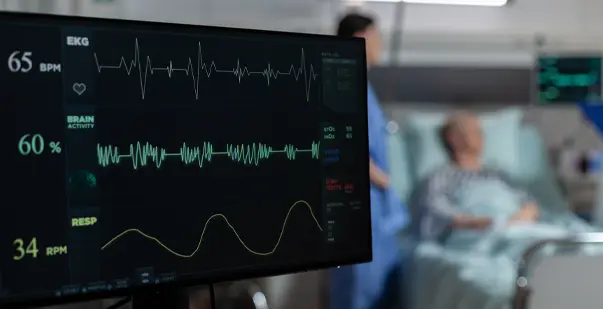
Updated on: May 7, 2024
Pulseless electrical activity (PEA) is a kind of irregular heart rhythm, leading to a malfunction of the heart. The electrical activity is too weak to make your heart pump. This causes the heart to stop working. Without medical attention, PEA can be highly dangerous. Keep exploring the blog to learn more about PEA treatment ACLS.
Pulseless electrical activity (PEA) is a medical condition where your heart stops beating because the electrical activity in your heart is not strong enough. This fails to make your heart beat. When your heart stops, you go into cardiac arrest. Additionally, you no longer have a pulse. PEA is a ‘non shockable’ heart rhythm. In other words, even a defibrillator would not be able to correct it. When not treated well, PEA leads to sudden cardiac arrest within minutes.
During the onset of a heartbeat, a cluster of cells creates an electrical current. Then it spreads to other areas of your heart. As the current passes through the heart muscle, the muscle then reacts by flexing. This causes your heart to pump blood and to squeeze.
It is easy to detect the electrical current with the help of an examination known as an electrocardiogram (ECG or EKG). With the help of PEA, there’s no detectable electrical current; however, your heart is not strong enough to pump blood to the body.
Here are two different types of PEA:
PEA is a common irregular hearing rhythm that happens in connection with cardiac arrest. It also means that there is no pumping of blood into or out of the heart. You can learn more by reading the PEA algorithm ACLS.
Read More: ACLS Cardiac Arrest Algorithm
PEA occurs when the heart suffers a major trauma. According to a 2021 study, there is a significant percentage of PEA leading to loss of blood flow in the heart muscle. This is a result of blockage in a coronary artery. It can occur when a condition affects metabolism, respiration, and circulation, causing an abnormal heart rhythm to develop.
Here are a few possible causes of PEA:
The primary symptoms of PEA are the following:
Read More: ACLS Bradycardia Algorithm
The only way to detect electrical activity is with the help of an electrocardiogram. A few other PEA tests that doctors use to diagnose the condition include the following:
The first treatment must be cardiopulmonary resuscitation, especially outside of a hospital setting. Continue CPR until media aid arrives.
If PEA happens inside a hospital, here are a few pulseless electrical activity treatment ACLS steps to follow:
Malfunctions in the heart’s electrical system create arrhythmias that are ‘shockable’. This means defibrillation, which can stop the rhythms by restoring your heart to a normal rhythm. These can turn into PEA; however, they are not shockable. CPR for pulseless electrical activity can get your switch to a shockable rhythm. If this happens, then it can lead to defibrillation. This has a chance to restore your heart to a normal rhythm.
PEA is thus life-threatening and can develop due to respiratory and cardiovascular problems. If you encounter someone experiencing PEA, you must call 911 at the earliest and start CPR right away. Preventing the condition from progressing to cardiac arrest may help save a person’s life. Hope the blog helps you lower the risk of the condition and offer PEA treatment ACLS effectively.